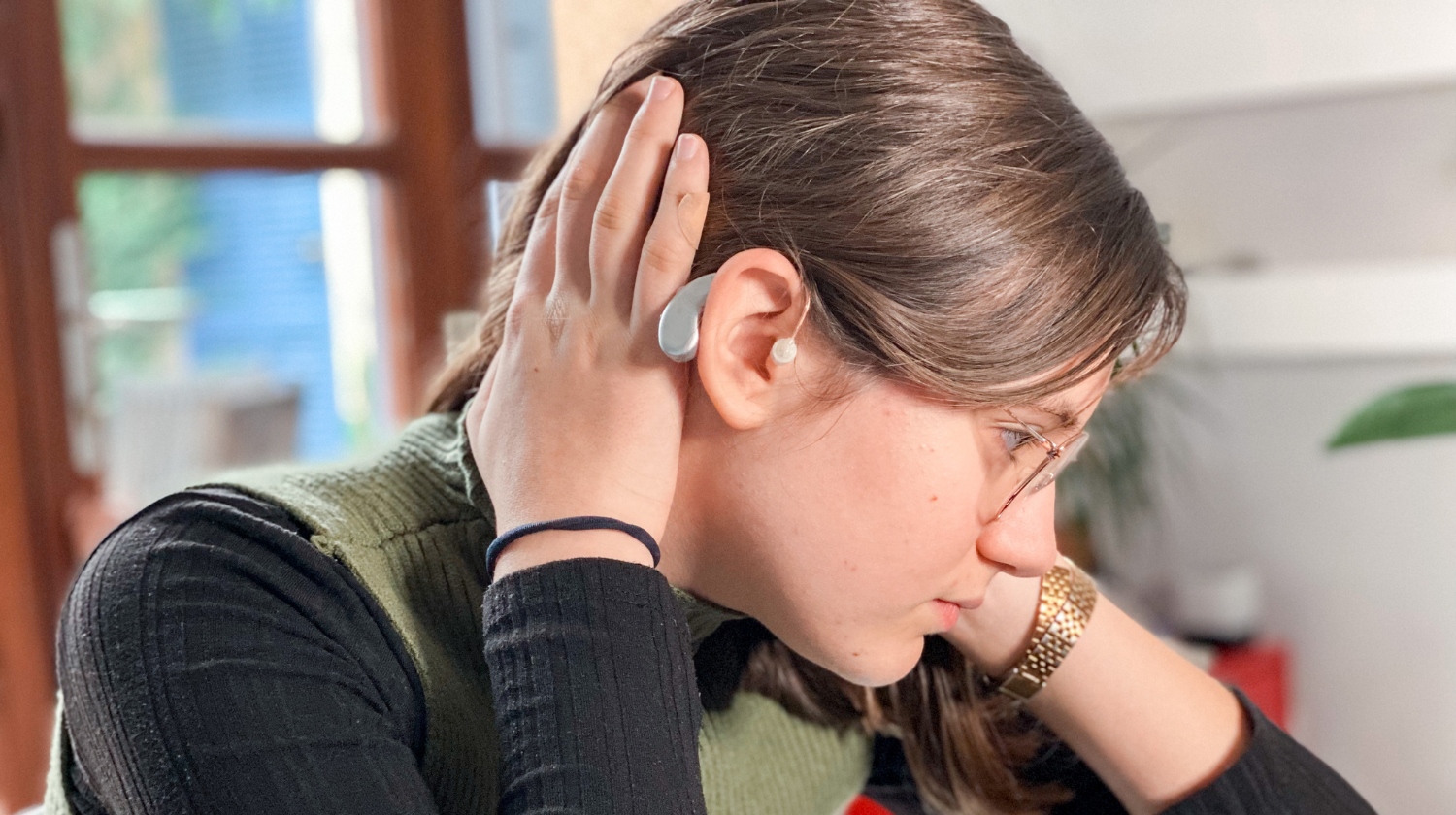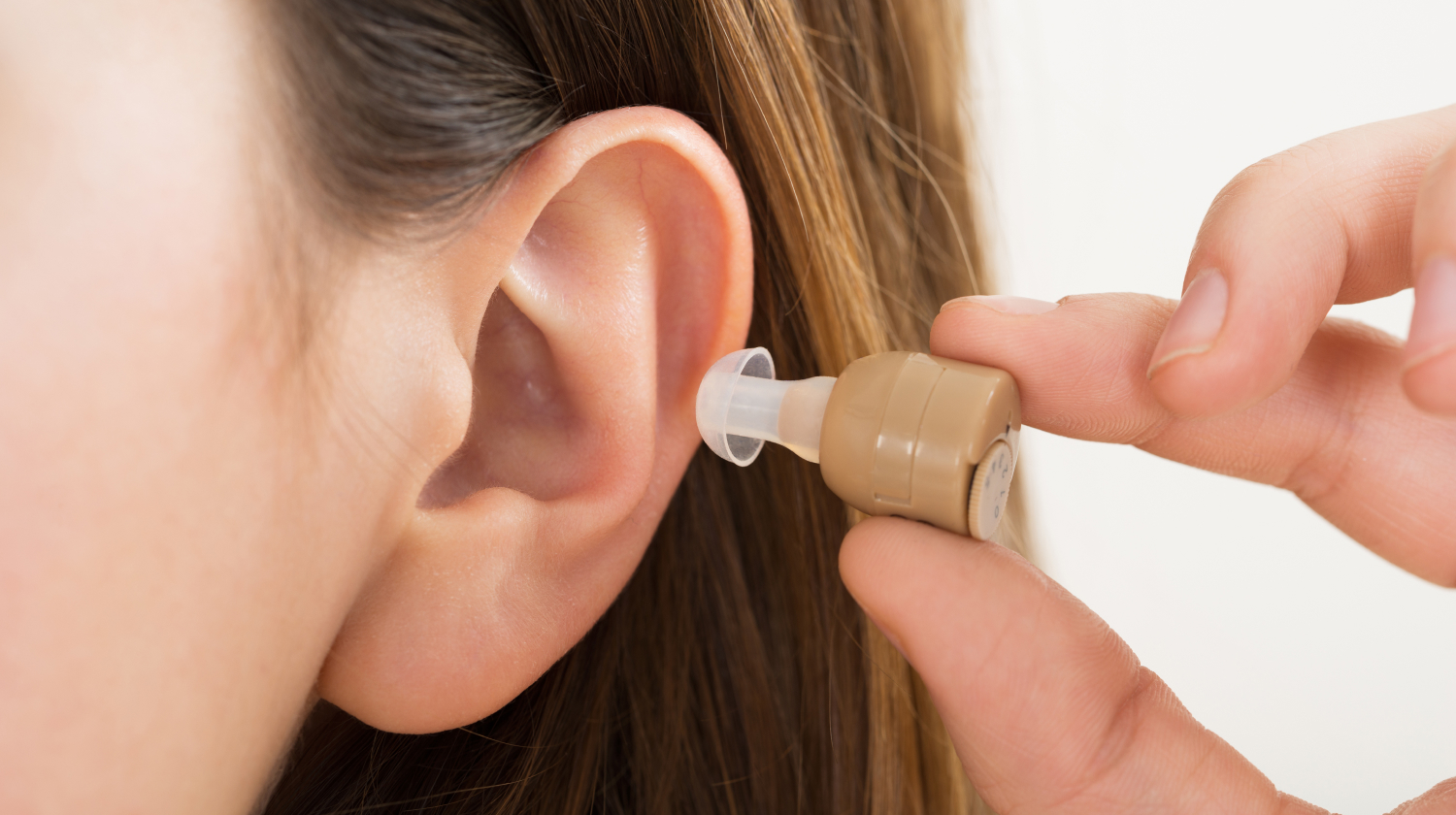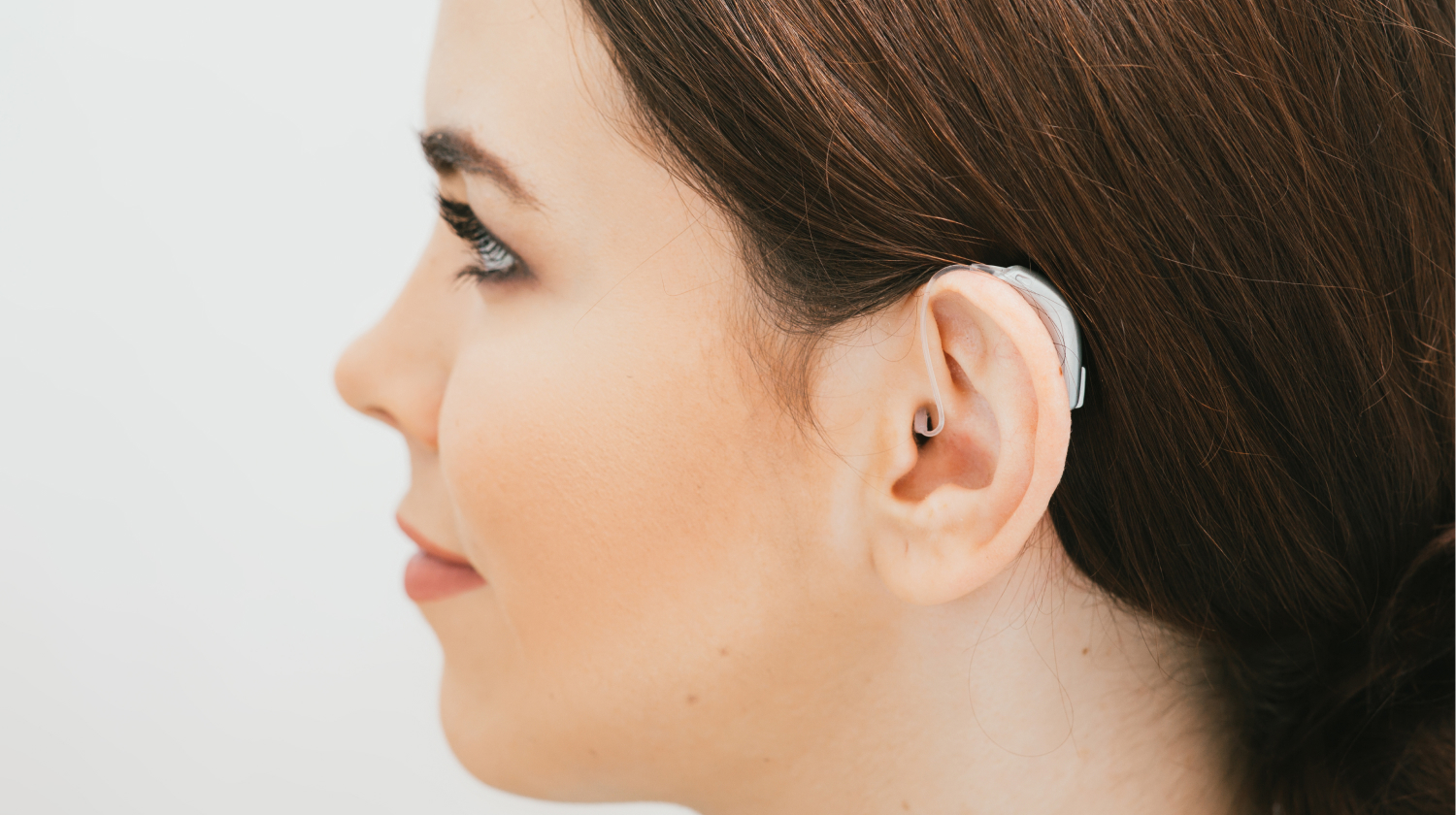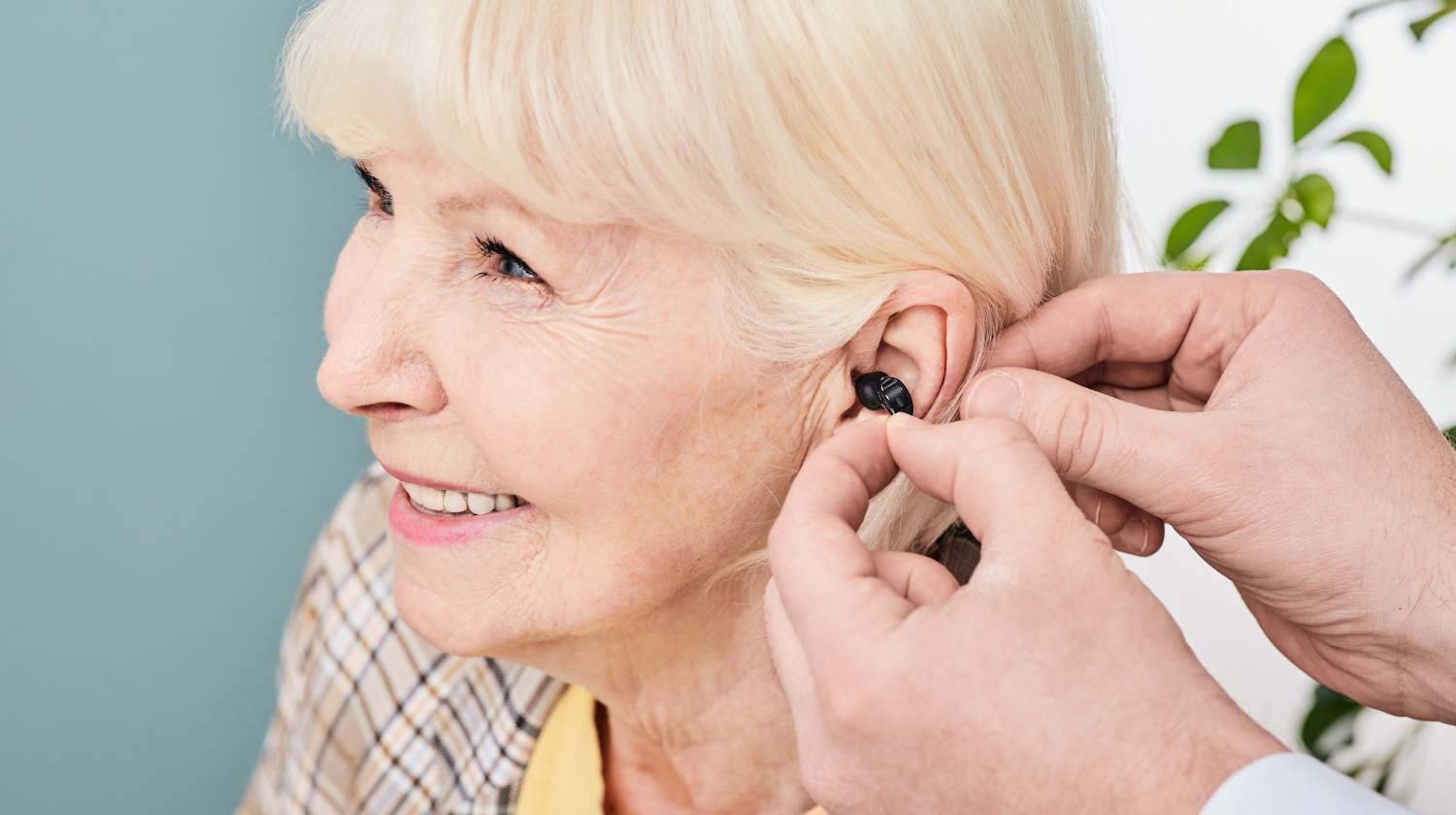Types Of Hearing Aids: How To Choose The Right One 2024?

By 2050, the World Health Organization predicts that 2.5 billion people[1] will have some degree of hearing loss. That means about one out of every ten people will develop hearing loss. Choosing between the many different types of hearing aids will be essential to find the best fit, thus preventing a worsening quality of life for everyone affected.
As for the U.S., approximately 15% of adults,[2] or 37.5 million people, already report some form of hearing loss. But it’s just something that affects adults, especially as we age. However, around two to three out of every 1000 children[2] in the U.S. are born with hearing loss in one or both ears, making this an issue for people of all ages, including the friends and family of those suffering.
So let’s explore the different types of hearing aids available to ensure you can continue enjoying your favorite activities.
Key Takeaways
- 37.5 million American adults currently suffer from some form of hearing loss.
- About 50% of people aged 75-plus experience hearing loss, but children are also affected.
- There are five main types of hearing aids available, each best suited to varying medical conditions, degrees of hearing loss, and lifestyles.
- Devices are now available over the counter, but it’s still best to see a hearing aid specialist first.
- Cost, insurance coverage, style, and personalized digital hearing aids with added features like Bluetooth all affect people’s choices.
Types Of Hearing Aids
There are typically five types[3] of hearing aids:
- Behind-the-ear — BTE.
- In-the-ear — ITE.
- Receiver-in-the-ear — RITE.
- In-the-canal — ITC.
- Contralateral routing of signals/Bilateral contralateral routing signals — CROS/BiCROS.
Now Let’s dive in deeper to learn more about each type of hearing aid.
Behind-The-Ear — BTE

Behind-the-ear aids are like your one-size-fits-all device. They’re great for anything from mild to profound hearing loss issues. It offers sound amplification and is easy to clean and maintain. Plus, it even comes in a variety of colors to choose from.
It fits right behind your ear with a custom ear mold or thin tube. Since it has a few parts though, you need good manual dexterity to place and insert it properly.
In-The-Ear — ITE

These hearing aids are custom-made to fit inside your ear canal. They either fill your entire ear, which is known as the full shell, or a portion, known as the half shell. They work best for people with moderate to severe hearing loss.
They’re perfect if you want a discreet look since they’re practically invisible when worn. They’re also easy to adjust, making them the convenient choice for people on the go or those with dexterity issues.
Receive-In-The-Eat — RITE

This type of hearing aid is similar to the BTE device. It has a small device that sits behind the ear with a thin wire connecting to a speaker in the ear canal. It offers a more natural sound thanks to a soft tip that sits inside the ear canal without stealing it.
It’s lightweight, comfortable, and a great option for people with mild to moderate hearing loss. However, you do need some manual dexterity to manage the device.
In-The-Canal — ITC

In-the-canal hearing aids are less visible thanks to a smaller size that fits deeply inside your ear canal. They’re similar to one called completely-in-the-ear-canal or CIC, which fits even deeper, making it even less visible. They’re comfortable but may not give as much amplification as other styles. Finally, they use batteries, which may be more difficult to handle and requires dexterity.
Contralateral Routing Of Signals/Bilateral Contralateral Routing Signals — CROS/BiCROS

This type of hearing aid was designed for people with hearing loss in one ear. The CROS aid is worn on the ear that hears well, with a microphone on the poor side, helping to extend the hearing. The BiCROS is similar, but it also includes a hearing aid in the non-hearing aid for added amplification. These earpieces also come in fun and stylish designs, making them quite popular.
How Can Hearing Aids Help?
Hearing aids have already changed millions of lives for the better, and their need will continue to grow as the population ages.
Disabling hearing loss, where you have a loss greater than 35 decibels in your better-hearing ear, is most common in adults aged 65-plus. About 25% aged 65 to 74[4] experience a disabling loss, and 50% for the 75-plus age group. Without these aids, a large portion of the population would be unable to do even simple daily activities that greatly affect their quality of life, like watching TV, driving, and connecting with loved ones.
Currently, the National Institute on Deafness and Other Communication Disorders estimates that almost 30 million U.S. adults[2] would benefit from a hearing aid. Without these aids, a loss in any of these activities could easily lead to isolation and depression, leading to a quick decline in overall physical and mental health for millions of people.
How Do Hearing Aids Work?
These small electronic devices magnify sound[5] vibrations entering the ear. They pick up sounds through a microphone and convert them into electrical signals that are sent to an amplifier. This amplifier boosts the volume of the sound and sends it to the speaker or receiver, which delivers the sound to the ear canal.
With this amazing technology, people with hearing loss can understand others and the environment better. They can communicate more easily, participate in social activities, and avoid losing any quality of life due to hearing loss. Nowadays, they can even be connected to smartphones and other devices for Bluetooth streaming and remote control, making them even more useful.
Ways To Choose The Right Type For You
Your healthcare provider will help you choose the best device depending on your health condition, situation, and lifestyle. The right type depends on many factors,[3] such as:
- Level of manual dexterity.
- Amount of regular earwax.
- Tinnitus, a ringing in your ears.
- High or low-frequency hearing loss.
- Mild, moderate, severe, or profound hearing loss.
- Activity level, such as sedentary, moderately, or highly active.
- Sensorineural hearing loss, which is caused by damage to your inner ear.
- Meniere’s disease, where swelling and pressure in your inner ear cause hearing or balance issues.
There are many things to consider, which is why it’s so important to get your hearing tested and speak to a professional about the best fit for you.
For example, a newer BTE version has an open-fit that sits behind the ear completely, with a narrow tube inserted in the ear canal. This keeps the ear canal open, so it’s the best choice for people with a lot of earwax. There are many hearing aids that can be damaged by too much earwax, but this design can handle it. It’s also a great type for people who feel like their voice isn’t aligned with what they hear through the hearing aid. However, it needs manual dexterity.
Here’s a table to break down the basic differences between different types of hearing devices:
| Device type | Hearing loss | Dexterity needed | Visibility |
|---|---|---|---|
| BTE | Mild to profound | Moderate to high | Moderate |
| ITE | Moderate to severe | Low | Low |
| RITE | Mild to moderate | Moderate to high | Low |
| ITC | Mild to moderate | Moderate to high | Low |
| CROS/BiCROS | One ear loss | Moderate to high | Low |
Of course, these are just a few of the elemental differences, and there are many more factors that go into choosing the best-suited hearing device for your medical needs and lifestyle — which is why an in-depth conversation with a hearing aid specialist is essential.
Things You Need To Know Before Buying
If you think you need a hearing aid, these are some things to consider[6] before buying:
- Professional evaluation: Your audiologist or hearing aid specialist will be best able to tell you which type fits your needs. They can also rule out any other possibilities that might cause hearing loss, like earwax or infections.
- Degree of hearing loss: Your best fit will depend on if you have mild, moderate, severe, to profound hearing loss.
- Style and features: Take your lifestyle and mobility into account. For example, if you’re very active and spend a lot of time outdoors, you’ll need a durable and water-resistant design. If your dexterity is low, you’ll need one easy to handle.
- Price and insurance coverage: Hearing aids can be expensive if your health insurance doesn’t cover them. Fortunately, many plans at least offer a discount, with many covering the price fully. Personalized digital hearing aids with added features that connect to your smartphone are another option.
- Trial period and warranties: Most manufacturers offer a trial period to test the device out and see if it’s a good fit for you. Many also offer a warranty covering different types of hearing aids and maintenance costs for a certain length of time.
If you consider these points, you’ll be more likely to get the device that best fits your needs and improves your ability to communicate and continue with life as usual.
Even though hearing aids are now available over the counter,[7] it’s still best to visit your doctor first. These new devices are mostly for mild to moderate hearing loss; you fit them yourself, so they might not work if you have more severe hearing loss.
Conclusion
Hearing loss is an incredibly common condition that affects people of all ages. Fortunately, there are many common hearing aid styles to choose from to improve hearing and avoid a worsening quality of life.
Each type of hearing device also has its own unique advantages and disadvantages. BTE hearing aids are suitable for a wide range of hearing loss, but they’re more visible, while ITE and ITC are more discreet. RITE hearing aids are comfortable and offer excellent sound quality, while CROS/BiCROS devices are designed for people with hearing loss in one ear and good hearing in the other.
When choosing a hearing aid, it’s essential to consult with an audiologist or hearing healthcare professional who can evaluate your hearing, rule out any other issues, and recommend the best type of hearing aid for your needs. Your degree of hearing loss, lifestyle, communication needs, and personal preferences all matter. They can also guide you in adjusting to your new hearing aid and offer tips for maintaining optimal hearing health.
Choosing the right hearing aid will make all the difference in the world, allowing you to avoid isolation, communicate more effectively, enjoy your favorite social activities, and maintain the best quality of life possible.
+ 7 sources
Health Canal avoids using tertiary references. We have strict sourcing guidelines and rely on peer-reviewed studies, academic researches from medical associations and institutions. To ensure the accuracy of articles in Health Canal, you can read more about the editorial process here
- World (2023). Deafness and hearing loss. [online] Who.int. Available at: https://www.who.int/news-room/fact-sheets/detail/deafness-and-hearing-loss
- NIDCD. (2021). Quick Statistics About Hearing. [online] Available at: https://www.nidcd.nih.gov/health/statistics/quick-statistics-hearing
- Cleveland Clinic. (2022). Types of Hearing Aids: Styles & How They Work. [online] Available at: https://my.clevelandclinic.org/health/articles/5122-hearing-aid-styles
- NIDCD. (2021). Quick Statistics About Hearing. [online] Available at: https://www.nidcd.nih.gov/health/statistics/quick-statistics-hearing#8
- NIDCD. (2022). Hearing Aids. [online] Available at: https://www.nidcd.nih.gov/health/hearing-aids
- Mayo Clinic. (2022). Hearing aids: How to choose the right one. [online] Available at: https://www.mayoclinic.org/diseases-conditions/hearing-loss/in-depth/hearing-aids/art-20044116
- NIDCD. (2022). Over-the-Counter Hearing Aids. [online] Available at: https://www.nidcd.nih.gov/health/over-counter-hearing-aids



